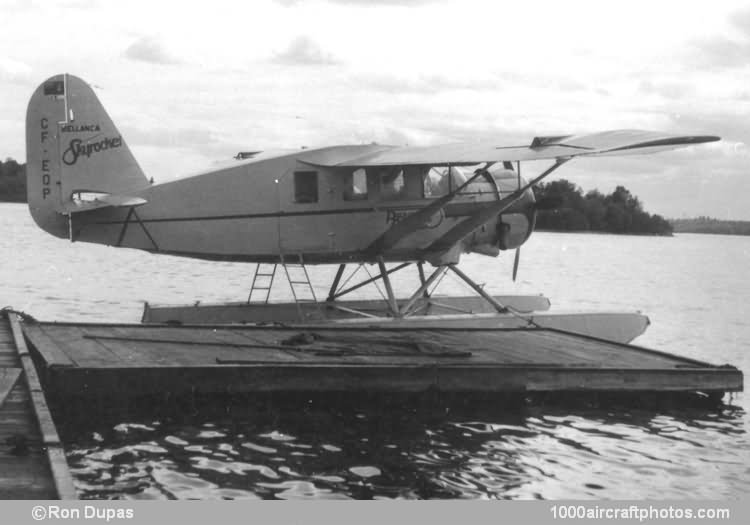In 1945 Brintnell formed Northwest Industries Ltd. at Edmonton and took over the facilities of Aircraft Repair, he also obtained the manufacturing rights for the Bellanca 31-55 Senior Skyrocket, and the Bellanca 60-76 Aircruiser, but no Bellanca Aircruisers were made in Canada.
The Bellanca 31-42 Senior Pacemaker and 31-55 Senior Skyrocket were introduced in 1935 as developments of the successful Bellanca CH-300 Pacemaker and CH-400 Skyrocket and followed the same general design and type of construction. (The Canadian-made Senior Skyrockets, have been frequently, and erroneously, referred to as Skyrockets, a name previously assigned to the Bellanca CH-400.)
For postwar Canadian production wing flaps were introduced and the original Senior Skyrocket's long narrow ailerons had to be altered to short, wide-chord ailerons to give a reasonable flap span. The cabin was given a more rugged interior to make it more suitable for bush flying, and quickly removable seats were installed. This model was designated 31-55A. A later model, the
31-55B, was developed, with larger cabin doors and the cabin floor extended aft 38 in (96 cm).
Powered by a 600 hp Pratt & Whitney R-1340 Wasp, the Canadian prototype, c/n 4 CF-DCH, was first flown, on skis, on February 28, 1946, at Edmonton by Stanley Ransom McMillan, and was shortly flown to the Bellanca factory in Delaware for modification approval since its original approval was under TC 565. It was soon found that the wing flaps interfered with the cabin door opening when left in the down position, and the door design had to be modified.
All thirteen Senior Skyrockets, almost twice the American production of seven, were sold originally to mineral exploration or bush flying companies in Canada where they gave good service. As seaplanes they operated on Edo 55-7170A floats. Production stopped in 1949 with a slow-down in mineral exploration. Production in Canada and USA:
